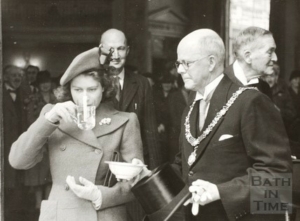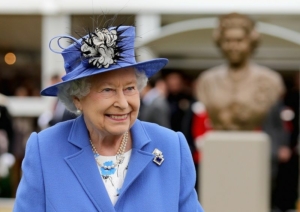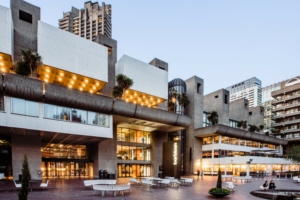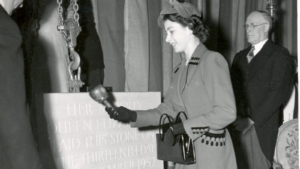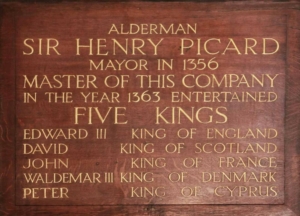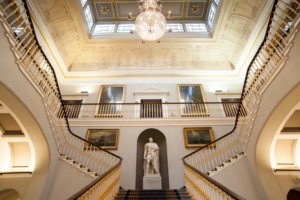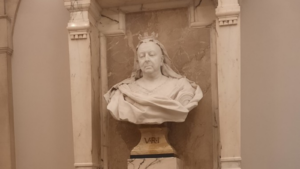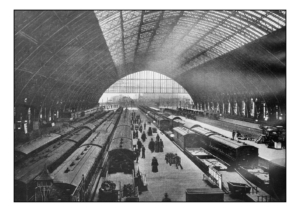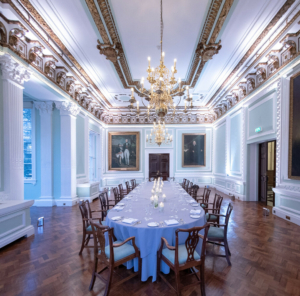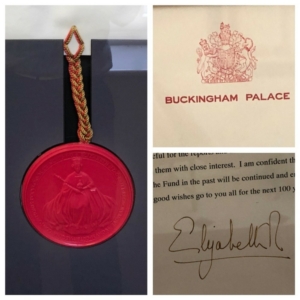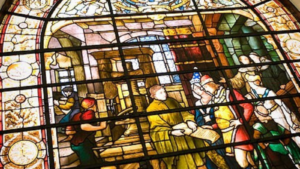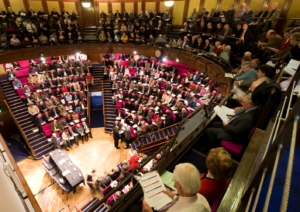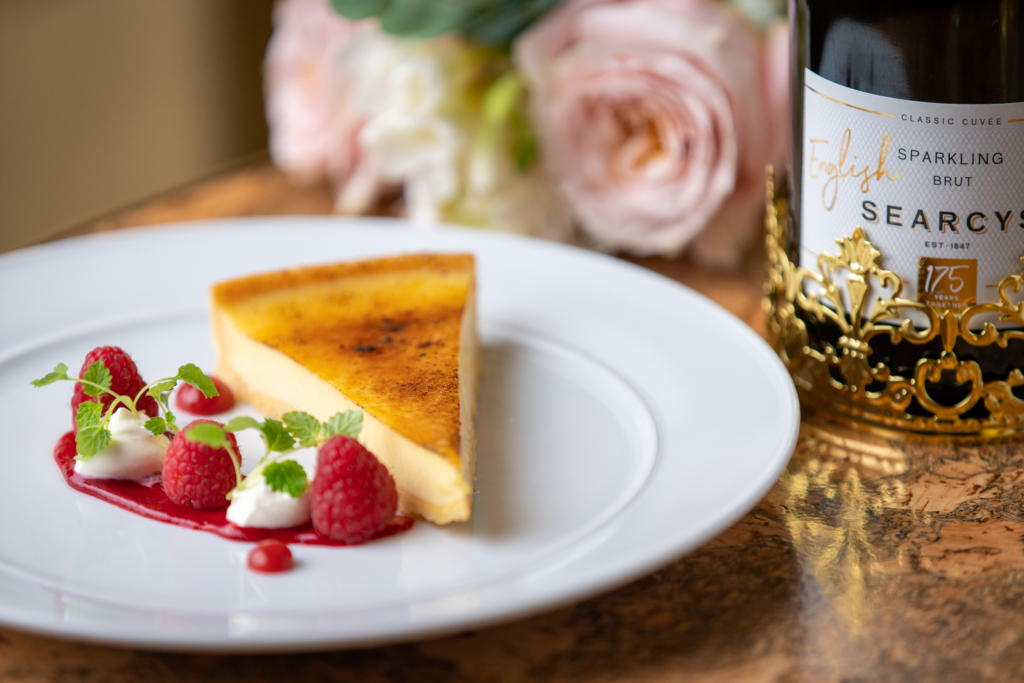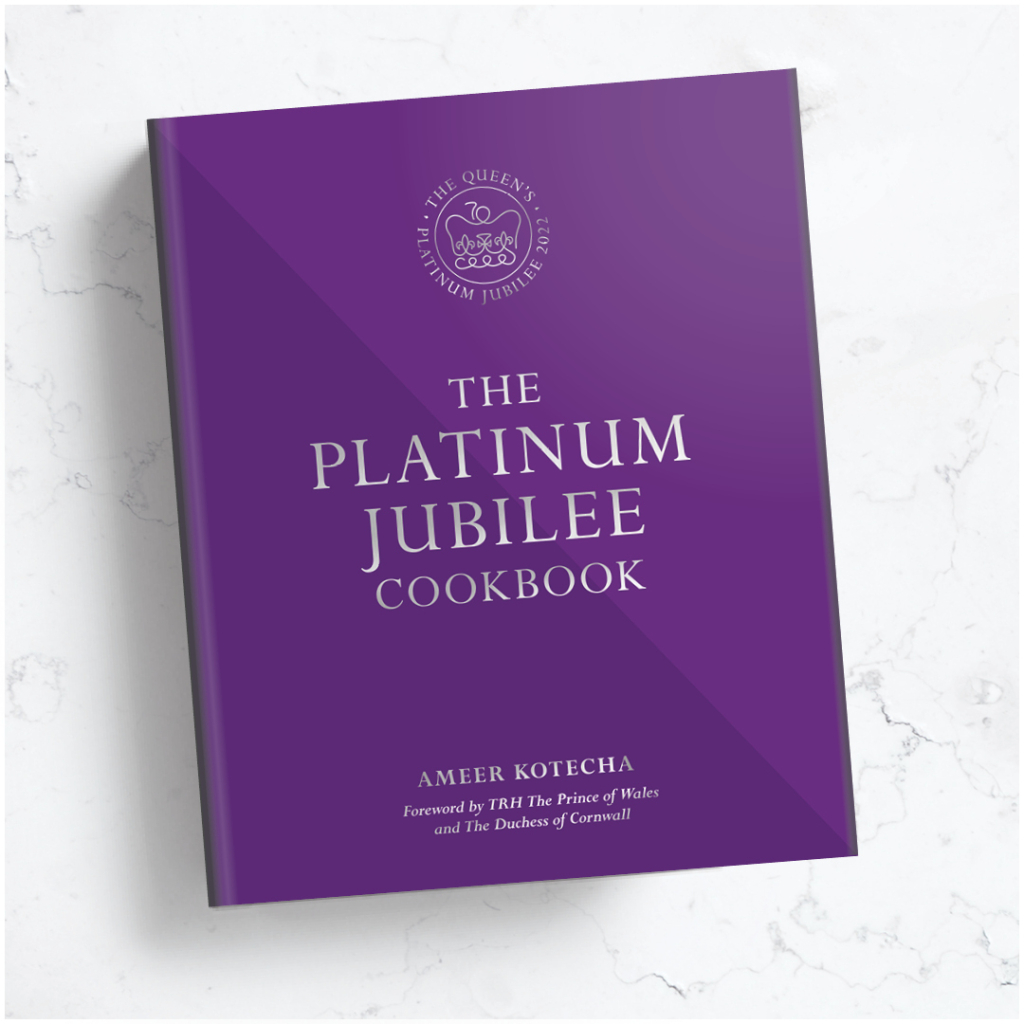-
Searcys: The Royal Connection
30 May 2022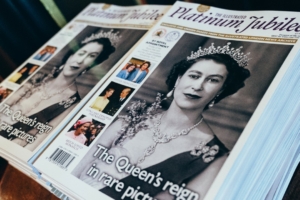
We have been at the heart of royal festivities throughout our 175-year history – from state banquets to royal weddings to coronation parties – and it’s no coincidence that many of the amazing venues we work with across London and the UK have equally fascinating royal connections. We are honoured to manage events at some of the most iconic and significant venues in the country and be a part of their history.
Ahead of the Queen’s Platinum Jubilee this June, we take a look at how some of these places have featured in her 70-year reign.
The Pump Room, Bath

One of the finest examples of Georgian and Regency era architecture, the city of Bath and especially the historic Grade I-listed Pump Room has long been associated with British royalty. It was first built in 1704 in the style of an orangery, before being modified in 1751 and then completely rebuilt in 1796. The Duchess of York officially opened the Pump Room in 1795. Queen Charlotte stayed here in 1818 to take the waters. Over a century later, fascinating royal archives show a photograph of the then Princess Elizabeth (now The Queen) tasting spa water at the Pump Room, when in Bath to stand down the Women’s Land Army in October 1945. Most recently, Her Majesty Queen Elizabeth visited the Pump Room in 2003 whilst on her Golden Jubilee tour.
The HAC

The Queen is the longest-serving Captain-General of the Honourable Artillery Company (HAC), and in 2016 unveiled a bronze bust of herself. The bust was commissioned by the HAC and created by leading portrait sculptor Antony Dufort.
As Captain-General of the British Army, The Queen’s strong connection to the place is also reflected in the magnificent portrait of her in The Long Room of Armoury House – painted by Chen Yan Ning in 1999. Furthermore, we have The Queen’s Room, which holds another portrait of the young Queen Elizabeth.
Barbican

The Barbican Centre took over a decade to build and was opened by The Queen on 13th March 1982. She famously declared it ‘one of the modern wonders of the world,’ with the building seen as a landmark in terms of its scale, cohesion and ambition.
Inner Temple

The Honourable Society of the Inner Temple is one of the four historic Inns of Court. Situated in the heart of London’s legal quarter, in a quiet oasis between Temple and Blackfriars stations, the Inner Temple has been providing hospitality to some of the greatest minds for over 600 years. Early in her reign, The Queen laid the foundation stone for the Hall at Inner Temple in 1952. In 1958, she visited again to inspect the Royal Charter, accompanied by her mother and the Duke of Edinburgh.
In 1985, The Queen famously visited again, this time with the Archbishop of Canterbury, to celebrate the 800th Anniversary of the Temple Church’s Consecration.
Vintners’ Hall

The Vintners’ Company, with its first Charter in 1363, is one of the Twelve Great Livery Companies of the City of London, with a history in the trade of wool and wine throughout the Middle Ages. In 1356, The Company’s Alderman Sir Henry Picard entertained five kings in the Hall – Edward III of England, David, King of Scotland, Waldemar III of Denmark and Peter, King of Cyprus.
116 Pall Mall

116 Pall Mall was built on the site of a former palace and was once home to the Prince of Wales before he acceded to the throne as George IV in 1820. Known as Carlton House and located between Pall Mall and St James’s Park (where 116 is now) the magnificent building was the London residence of George IV from 1783 – 1826, but after becoming King, he decided it was inadequate for his needs. George moved out in 1826 and Carlton House was demolished to make way for 116 Pall Mall and Buckingham Palace was rebuilt, where George IV resided after Carlton House. The stunning large iron gates at the entrance to the Champagne Bar, located in the basement at 116, served as the original doors to the Prince’s wine cellar.
Nowadays, 116 Pall Mall is home to many original royal portraits throughout the building, including portraits of Her Majesty The Queen, and the late Duke of Edinburgh, located right at the bottom of the grand staircase. To mark her Platinum Jubilee, Searcys is hosting a regal afternoon tea in the beautiful Morning Room, in true quintessential British style.
One Moorgate Place

One Moorgate Place, home of Chartered Accountants’ Hall, is a beautiful grade-II listed venue in the heart of the City of London. Having originally opened its doors in 1893, it is a fine example of Victorian neo-Baroque architecture. In 1880, before the building was complete, Queen Victoria granted a Royal Charter to the Institute, hereby recognising professional accountants. As such a marble niche bust of Queen Victoria can be found on the first floor of the venue. In 1959 a radical expansion of the building was commissioned, including The Great Hall to accommodate large gatherings. This new space was opened by Her Majesty The Queen Mother in May 1970.
St Pancras Brasserie and Champagne Bar

Searcys Brasserie and Champagne Bar are located at the heart of the vibrant St Pancras railway station. The magnificent Victorian train station has long-held ties to the royal family. King’s Cross takes its name from a monument to King George IV which had been erected nearby but demolished in 1845, and it was the Poet Laureate (appointed by The Queen as a member of the royal household) John Betjeman who in 1966 succeeded in saving the station from demolition. The Channel Tunnel was officially opened by HM Queen Elizabeth II in 1994, with St Pancras confirmed by the Government as the preferred terminus. In 2007, celebrating the re-opening of St Pancras International, The Queen made a speech which began: “The remarkable re-birth of this great and gleaming station means that people across the whole of Britain, not just the south-east, are suddenly quite a bit closer to Europe.” She described St Pancras “not just as a station but as a destination,” which has been true ever since.
10 – 11 Carlton House Terrace

Built-in the height of the Georgian period in 1831, this stunning Roman Classical design was conceived by architect John Nash. He had two aims in mind for the property: to provide residents with good views of St James’s Park and create an impressive backdrop for the Royal Park. It was constructed on the site of Carlton House, the former home of the Prince Regent, later George IV. Since then, it has housed various aristocratic families, a WWI hospital for wounded soldiers, the Foreign Press Association and most recently the British Academy
11 Cavendish Square

London’s most central venue, 11 Cavendish Square is situated in the heart of London’s West End. As the official home of The King’s Fund, an independent charitable organisation working to improve health and care in England, it was established in 1897. It was originally called “The Prince of Wales Hospital Fund,” and later renamed “King Edward’s Hospital Fund” in 1907 after the accession of King Edward VII. The King’s Fund was granted a royal charter in 2008 by her Majesty The Queen after changing its name from King Edward’s Hospital Fund. Prince Charles is currently the venue’s President, and the Queen is the patron.
Stationer’s Hall

This fascinating building and events space in the heart of the City holds the Stationers’ Company Royal Charter and has royal connections going back over 600 years. In recent times, the Stationers’ Company has run an apprenticeship scheme at Royal Windsor book bindery, called the Queen’s Bindery Apprenticeship Scheme.
The Royal Institution

Steeped in 200 years of scientific history and heritage, the Ri provides a fascinating venue on Albemarle Street in Mayfair. Its’ Royal Charter was granted in 1800, and it became a membership organisation in 1810, a tradition which is still going strong today. As the name suggests, the venue has long had royal connections, and in 1973 the Faraday Museum and Archive were opened by HM Queen Elizabeth II.
-
SEARCYS PLATINUM JUBILEE EVENTS
 BOOK NOW
BOOK NOWSEARCTS JUBILEE AFTERNOON TEA
Celebrate Her Majesty's Platinum Jubilee in quintessential British style with our Jubilee Afternoon Tea.
 BOOK NOW
BOOK NOWSEACYS PLATINUM JUBILEE DINNERS
Feast like royalty and dine of dishes inspired by the menus of Searcys coronation parties of 1953. Join us at The Gherkin or St Pancras Brasserie and toast to the Queen's Jubilee with our limited edition menus.
 READ MORE
READ MORESEARCYS INSIDER: THE PLATINUM JUBILEE COOKBOOK LAUNCH
Our Searcys Insider is here to give you the behind the scenes of the Platinum Jubilee Cookbook launch event.
-
- ABOUT SEARCYS
- Restaurants and Bars
- Event Venues
- EVENT SPACES
- All Locations
- {10-11} Carlton House Terrace
- 30 Euston Square
- 41 Portland Place
- 116 Pall Mall
- Barber-Surgeons Hall
- Battersea Power Station
- Carpenters’ Hall
- Church House
- Gray’s Inn
- Horizon 22
- IET London: Savoy Place
- National Army Museum
- No. 11 Cavendish Square
- One Moorgate Place
- Saddlers’ Hall
- Searcys at The Gherkin
- EVENT SPACES cont.
- Event Types
- SEARCYS IN THE CITY
- SEARCYS ROLLS-ROYCE
- Let Us Find Your Venue
- Event Catering
- What’s On
- Contact Us
- ABOUT SEARCYS
- Restaurants and Bars
- Event Venues
- EVENT SPACES
- All Locations
- {10-11} Carlton House Terrace
- 30 Euston Square
- 41 Portland Place
- 116 Pall Mall
- Barber-Surgeons Hall
- Battersea Power Station
- Carpenters’ Hall
- Church House
- Gray’s Inn
- Horizon 22
- IET London: Savoy Place
- National Army Museum
- No. 11 Cavendish Square
- One Moorgate Place
- Saddlers’ Hall
- Searcys at The Gherkin
- EVENT SPACES cont.
- Event Types
- SEARCYS IN THE CITY
- SEARCYS ROLLS-ROYCE
- Let Us Find Your Venue
- Event Catering
- What’s On
- Contact Us
Saved Venues0Stay Connected with Searcys
Sign up to receive updates on exclusive events, restaurant offers, and more from Searcys.
- Restaurants and Bars
- Restaurants and Bars
